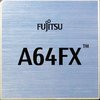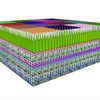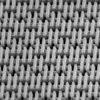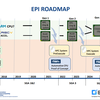Fujitsu has announced the specifications for A64FX, an Arm CPU that will power Japans first exascale supercomputer. The system, known as Post-K, is scheduled to begin operation in 2021.
Every contest has winners and losers. If you have spent much time following student cluster competitions at HPC conferences, you may wonder, as I have, why some win time and again, while others have a difficult time placing.You may also wonder why some never make it on the field.
In a bid to reinvent computer graphics and visualization, NVIDIA has developed a new architecture that merges AI, ray tracing, rasterization, and computation.The new architecture, known as Turing, was unveiled this week by NVIDIA CEO Jensen Huang in his keynote address at SIGGRAPH 2018.
Intel used this weeks Data-Centric Innovation Summit to reveal the timeline and technology updates for its upcoming Cascade Lake, Cooper Lake and Ice Lake Xeon processors.
Two prototypes of Chinas initial batch of exascale supercomputers are now up and running according to local news reports. And neither of them appears to be based on x86 technology.
The Defense Advanced Research Projects Agency (DARPA) has selected the teams for two research programs that the agency hopes will provide technologies to transcend the limits of Moores Law.
In my role as an independent advisor to industry users of high performance computing, I recently helped to coordinate a private gathering of leading industry users of HPC no HPC centers, or vendors, just the users of HPC in industry meeting as peers. One key topic we discussed was things that might significantly change how industry deploys and uses high performance computing, what I refer to as HPC disruptors.
The upcoming battle between AMDs Rome server CPU and Intels Ice Lake Xeon scalable processor promises to be an interesting matchup. But this time around, AMD could have an advantage it has never had before.
The competition between the US, China, and Japan to field the first exascale supercomputer looks a lot closer than it did a couple of years ago. But the real significance of the narrowing schedules reflects a shift in technology preferences and a trend toward domestic control of HPC hardware.
The European Processor Initiative (EPI), an ambitious program to develop a pair of chips for domestic supercomputers, is poised to change the way Europe does HPC. And although the work is still very much in its early stages, it looks like the Europeans have selected their preferred processor architectures: Arm and RISC-V.










